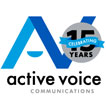
In a world dominated by fast-paced social media feeds and fleeting attention spans, you might think email newsletters are a relic of the past. But they remain one of the most efficient marketing tools, with an average ROI of 36:1.
Beyond driving results, newsletters are a powerful way to repurpose and amplify content you’ve likely already got lying around. The trick is how to build a newsletter that’s both engaging for your audience and sustainable for your team.
The key lies in consistency — both in how often you publish your newsletter and how it’s structured. Here’s how to build an email newsletter that delivers results while being easy to produce.
1. Determine your goal.
Email newsletters are versatile tools, but their effectiveness depends on having a clear purpose. What do you want your newsletter to achieve?
Consider where you want your newsletter to fall in the marketing funnel. Will you use it to build relationships with potential customers? Keep your audience engaged? Perhaps it will be aimed at driving sales or conversions. What will your calls to action be?
Understanding your goal will guide both your content choices and the tone of your messaging.
2. Assess your audience.
Your audience’s preferences should shape every aspect of your newsletter. Ask yourself: Are they pressed for time, preferring bite-sized content or do they value in-depth analysis and details? What are their pain points, and how can our content help them solve problems?
The better you understand your audience, the more relevant and engaging your newsletter will be to them.
3. Conduct a content audit.
Next, you’ll need to determine what content will go into your newsletter. We recommend first assessing what you have. What content can be promoted in your newsletter as is? What content will need to be repurposed or reimagined? Then, you can determine how much fresh content you’ll need to produce.
4. Assess your resources.
Now it’s time to figure out frequency. Not only will you want to weigh how often your audience wants to hear from you and the length of your sales cycle, but you’ll also need to consider your team’s bandwidth, budget and how sustainable your production schedule will be.
Ask yourself if you have the time and resources to produce a weekly, monthly or quarterly newsletter. How much time will you need to write new articles? Will you use original photography, or can you use stock images or existing visuals?
5. Outline recurring themes.
Just like periodicals often include recurring sections, such as advice columns, recipe pages or event listings, think about how you’ll organize your newsletter to strike a balance between variety and consistency. Establishing a predictable structure will help you keep your content fresh while ensuring readers know what to expect each time you arrive in their inbox.
Map out three to five general content “buckets” your newsletter will contain. These should align with your audience’s interests and your business objectives. For example, each edition of a newsletter for physicians in a clinically integrated network might include sections dedicated to:
- Promoting care coordination services
- Sharing regulatory or health plan updates
- Highlighting network events or specialists
- Addressing health equity initiatives
- Showcasing clinical excellence stories
Consider how to present this information creatively and efficiently. Not everything needs a lengthy write-up. Use statistics, infographics or pull quotes for quick consumption, linking out to more in-depth content when necessary.
6. Collaborate with your designer.
Once you have a clear sense of your content, collaborate with a designer to develop a visually appealing template. A good designer will help ensure your newsletter adheres to brand standards and effectively communicates your message.
They can also suggest ways to highlight key content visually, such as using color, spacing and layout to make the newsletter easy to read and navigate.
7. Plan your editorial calendar.
Before launching, create an editorial calendar that outlines all the topics you’ll cover for at least the first four to five issues. This will help you test the structure and ensure you’re prepared with a steady content stream. An editorial plan sets the foundation for long-term success.
8. Start creating.
With your editorial calendar and design template ready, it’s time to craft your first newsletter. Focus on delivering value, keeping copy concise and presenting your content in a visually engaging way.
9. Test and refine.
Once your newsletter is live, closely monitor its performance. Key metrics to track include:
- Open rates: The percentage of recipients who open your email.
- Click-through rates: The percentage of recipients who click on links within the email.
According to Mailchimp, the average open rate for email newsletters is 36%, and the average click rate is 2.6%. Use Mailchimp’s search tool to compare your newsletter’s performance to your specific industry’s average. Then, identify what’s working — and what’s not.
Low open rates? Try A/B testing subject lines to see what grabs attention. Low click rates? Experiment with CTAs or content placement.
Your analytics will guide you in refining your content, ensuring your newsletter evolves to meet your audience’s needs and deliver better results.
